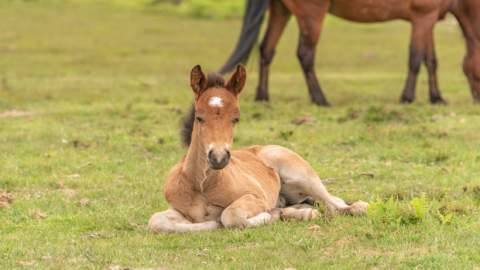The New Forest's Ancient Woodland
In 1079, William The Conqueror came to the New Forest and named the area his ‘new hunting forest’ – 1,000 years later his ‘Nova Foresta’ still retains the same mystery and romance that enticed him in the first place.
The New Forest is one of the few areas of England where the ancient landscape has remained relatively unchanged. You will still find a mass of beautiful woodlands, heathlands and even the practice of commoning is still very much an aspect of New Forest life.
The ancient system established by William The Conqueror to protect and manage the woodlands and wilderness heaths, is still in place today. With the supporting efforts of the Verderers, Agisters and Commoners, literally the judges, stockmen and land users of the forest, the ancient land use system has been upheld.
The New Forest trees provide some of the greatest history of all, with the ancient trees having stood the test of time throughout the ages. You can find a variety of different tree species in the Forest including mighty redwoods, oaks, beech, yew, holly and many more.
Naturalist and wildlife ambassador, Simon King, describes the New Forest as ‘a natural history lover’s playground’.
What is ancient woodland?
Woodland habitats that have existed since the 1600AD can be classed as ancient woodland.
According to the New Forest National Park Authority, the New Forest is believed to have the highest concentration of ancient trees in Western Europe. Many of the features of ancient woodland are unique and special, which lead to some rare species of both flora and fauna.
The soils of our ancient woodlands remain relatively undisturbed by human activities, keeping layers of falling leaves laid down over centuries to provide a home to fungi, invertebrates and dormant seeds.
Ancient woodland can often be depicted by the flora that can be found there; carpets of bluebells in May and the bright yellow of celandines in the late winter months offering a burst of colour on the woodland floor. The strong scent of wild garlic is another indictor of ancient woodland, as are certain grasses and sedges. Oak, ash, beech and elm trees can all form part of ancient woodland.
The New Forest National Park is one of the most important areas in the country for lichens, beetles, bats and fungi. Many of which dependent on our very old trees, including some rare species.
Our ancient woodland supports many species of mammal including badger and fallow deer as well as birds including woodcock, firecrest and goshawk. Take a look at the New Forest National Park Authority’s video with Simon King as he delves into some of our ancient woodland.
Amazing places to spot some of our iconic trees and ancient woodland
The ancient woodland of the New Forest can be found very easily as you travel around the National Park. Take a walk, bike ride or even a drive and you will soon come across some of our woodland. A great way to help find our ancient woodland is to buy one of the local Ordnance Survey maps for the area. These maps will show you the footpaths and bridleways that lead into our woodland via our various inclosures.
The mighty Knightwood Oak is also known as the ‘Queen of the Forest’ and is over 500 years old. The tree can be found approximately 2.4 miles from Lyndhurst on the Bolderwood Ornamental Drive and is a beautiful sight throughout the year.
Bolderwood Ornamental Drive (also known as Bolderwood Arboretum) is also a great place to spot ornamental coniferous trees, which were planted here in 1860. It is also home to the Bolderwood Deer Sanctuary, the beautiful trees and wildlife found here make for perfect photo opportunities.
Discover more about our ancient woodland and trees
There are many hidden treasures for you to discover. To find out more about the history of the New Forest and our ancient woodland, the ideal place to start your visit is the New Forest Heritage Centre in Lyndhurst.
Book onto a guided walk of the New Forest. Guides can lead you on a walk to find some of our ancient trees and to take you into our ancient woodland. Some of guides have even previously worked in conservation and all have a passion and love for the New Forest.
Top tips on becoming a Forest-friendly visitor
The New Forest National Park is a wonderful place to visit and you can help it stay that way by being a Forest friendly visitor.
Stay safe by following the New Forest Code.



